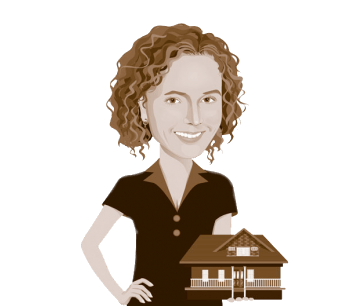Fall Survey Highlights Stress Test Fallout
OSFI’s forthcoming stress test for all uninsured mortgages after January 1 will have far-reaching effects across the mortgage industry, potentially removing up to 50,000 buyers from the real estate market each year.
That’s one of many key findings from Mortgage Professionals Canada’s Annual State of the Residential Mortgage Market survey, released this week by the association’s chief economist Will Dunning.
“The market is already slowing under the weight of increased interest rates, and policies aimed at suppressing the market further might be adding to economic risks,” he said.
Like in years past, this report dishes up a healthy serving of relevant and insightful industry statistics. We’ve combed them over and have included some of the most pertinent below. (Data points of special interest appear in blue.)
**********
New OSFI Regulations
- 18%: The percentage of prospective homebuyers who require a mortgage and who otherwise would have had reasonable prospects of completing their desired transactions, that are expected to fail the stress test and therefore not be able to make their anticipated purchase
- 91%: The percentage of new mortgages, across all channels, that will be subject to some form of stress testing
- 6.8% (or $31,000): The amount that potential homebuyers will need to reduce their target price in order to pass the stress test
- 20%: The percentage of buyers who will have to adjust their target price by less than 2.5%
- 40-50%: The percentage of buyers who will fail the stress test, that are expected to be unable to find an alternative for which they can qualify
- 100,000: The number of prospective buyers who previously could have qualified for financing, who will now be disqualified
- 50,000-60,000: The number of buyers who will still be able to make a purchase, though one that is “less attractive to them”
- 40,000-50,000: The number of prospective buyers who will be removed from home ownership entirely
- 50,000-100,000: The potential number of renewers each year who “may find themselves unnecessarily vulnerable” in their mortgage renewals as they will be unable to negotiate with other federally regulated lenders
- “In some cases, these renewing borrowers may be forced to accept uncompetitive rates from their current lenders,” Dunning notes
Mortgage Types and Amortization Periods
- 68%: Percentage of mortgage in Canada that have fixed interest rates (72% for mortgages on homes purchased during 2016 or 2017)
- 28%: Percentage of mortgages that have variable or adjustable rates (24% for mortgages taken out in 2016/2017)
- 4%: Percentage that are a combination of fixed and variable, known as “hybrid” mortgages
- 86%: Percentage of mortgages with and amortization period of 25 years or less (81% for home purchased between 2014 and 2017)
- 14%: Percentage with extended amortizations of more than 25 years (19% for recent purchases between 2014 and 2017)
Actions that Accelerate Repayment
- ~33%: Percentage of overall mortgage holders who voluntarily take action to shorten their amortization periods (vs. 38% of recent buyers)
- For buyers who purchased a home between 2014 and 2017:
- 18% made a lump-sum payment (the average payment was $19,500)
- 16% increased the amount of their payment (the average amount was $440 more a month)
- 10% increased payment frequency
Mortgage Sources
- 46%: Percentage of borrowers who took out a new mortgage during 2016 or 2017 who obtained the mortgage from a Canadian bank (vs. 61% of total mortgages)
- 39%: Percentage of recent mortgages that were arranged by a mortgage broker (vs. 27% of overall mortgages)
- 12%: Percentage of recent borrowers who obtained their mortgage through a credit union (vs. 8% of all mortgages)
Interest Rates
- 2.96%: The average mortgage interest rate in Canada
- A small drop from the 3.02% average recorded last year, though down substantially from the 3.50% average rate in 2013
- 2.90%: The average interest rate for mortgages on homes purchased during 2017
- 2.68%: The average rate for mortgages renewed in 2017
- 51%: Of those who renewed in 2017, percentage who saw their interest rate drop
- Among all borrowers who renewed in 2017, their rates dropped an average of 0.19%
- 2.72%: The average actual rate for a 5-year fixed mortgage in 2017 , about two percentage points lower than the posted rates, which averaged 4.72%
Miscellaneous
- 0.24% (1 in 401 borrowers): The current mortgage arrears rate in Canada (as of August 2017)
- $1,486: The average monthly mortgage payment ($1,568 for recent purchases made from 2014 to 2017)
Equity
- 62%: The average percentage of home equity for homeowners who have a mortgage but no HELOC
- 58%: The average equity ratio for owners with both a mortgage and a HELOC
- 81%: The equity ratio for those without a mortgage but with a HELOC
- 91%: Percentage of homeowners who have 25% or more equity in their homes
- 53%: Among recent buyers who bought their home from 2014 to 2017, the percentage with 25% or more equity in their homes
Equity Takeout
- 9% (860,000): Percentage of homeowners who took equity out of their home in the past year
- $54,500: The average amount of equity taken out
- $47 billion: The total equity takeout over the past year
- $28 billion was via mortgages and $17 billion was via HELOCs
- Most common uses for the funds include:
- 26% (10.7 billion): For purchases (including education)
- 22% ($9 billion): For home renovation and repair
- 21% ($8.7 billion): For debt consolidation and repayment
- 21% ($8.4 billion): For investments
- 10% ($4.2 billion): For “other” purposes
- Equity takeout was most common among homeowners who purchased their home during 2000 to 2009
Sources of Down payments
- 26%: The average down payment made by first-time buyers from 2014 to 2017, as a percentage of home price
- This is a significant increase from previous surveys, where the average down payment was consistently around 20%. Dunning writes that most of these buyers appear to have increased their down payments to avoid the need for mortgage insurance
- The top sources of these down payment funds for homes bought from 2014 to 2017 were:
- 92%: Personal savings
- 43%: Gifts from parents or other family members (vs. 23% from 2010-2013)
- 19%: Loan from parents or other family members (vs. 12% from 2010-2013)
- 27%: Loan from a financial institution
- 29%: Withdrawal from RRSP
- 105 weeks: The amount of working time at the average wage needed to amass a 20% down payment on an average-priced home
- This is up from 93 weeks in 2014 and 53 weeks two decades ago
Homeownership as “Forced Saving”
- 50%: Approximate percentage of the first mortgage payment that goes towards principal repayment (based on current rates)
- 10 years ago this share was about 25%
- Dunning notes that rapid repayment of principal means that, “once the mortgage loan is made, risk diminishes rapidly”
- He added that most affordability analyses use the posted rate, “which gives a distorted impression of the current level of affordability, and of how current affordability compares to the past”
A Falling Homeownership Rate
- 67.8%: The homeownership rate in Canada in 2016
- Down from 69% in 2011
- Ownership rates fell for the three youngest age groups of buyers (first-time buyers) by more than 4%
- Dunning attributes this “disappointing” change to:
- The increased difficulty of saving down payments
- The elevated rate of “forced saving”
- Five sets of mortgage insurance policy changes by the federal government that have made it more difficult to buy
Consumer Sentiment
- 7.15: The average score (on a scale of 1 to 10 where 1 indicated complete disagreement) with the following statement: “Low interest rates have meant that a lot of Canadians became homeowners over the past few years who probably should not be homeowners.” (Up from an average score of 6.98 in previous surveys)
- 7.15: Average score in response to the statement that “real estate in Canada is a good long-term investment” (down from the previous average of 7.28)
- 90%: The percentage of homeowners who are happy with their decision to buy a home
- 7%: Of those who regret their decision to buy, the regret pertains to the particular property purchased
- Just 4% regret their decision to buy in general
Consumers’ Comfort with Technology
- 65%: Percentage of mortgage consumers who are “moderately” or “quite” comfortable with texting or instant messaging their mortgage professional with questions or concerns (77% of those aged 18-24)
- 47%: Percentage who are moderately or quite comfortable with being served by an online digital mortgage advisor (i.e., a chatbot) when applying for a mortgage
(vs. 58% of those aged 18-24)
- 40% are “uncomfortable” while 27% are “moderately uncomfortable”
- 50%: Percentage who are moderately or quite comfortable with applying for a mortgage through an app on their mobile device (vs. 73% for those aged 18-24)
- 36% are uncomfortable while 26% are moderately uncomfortable
- Dunning notes that comfort levels are greatest for the youngest age groups, but surprisingly also among those aged 65 and older
Outlook for the Mortgage Market
- Data on housing starts suggests housing completions in 2018 will increase slightly compared to 2017. “This factor, therefore, will tend to increase the growth rate for mortgage credit,” Dunning writes.
- “Another significant factor is that low interest rates mean that consumers pay less for interest and, therefore, are able to pay off principal more rapidly,” he noted. “Current low interest rates have, therefore, tended to reduce the growth rate for mortgage debt.”
- 5.9%: The current year-over-year rate of mortgage growth (as of August)
- Vs. an average rate of 7.3% per year over the past 12 years
- Dunning expects the growth rate to slow to 5.6% by the end of 2017 and 5.5% for 2018
This article was written by Steve Huebl of Canadian Mortgage Trends. It was originally published here on December 8 2017.
Share












